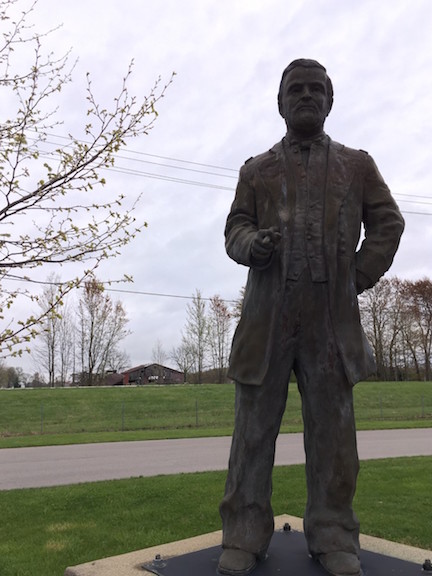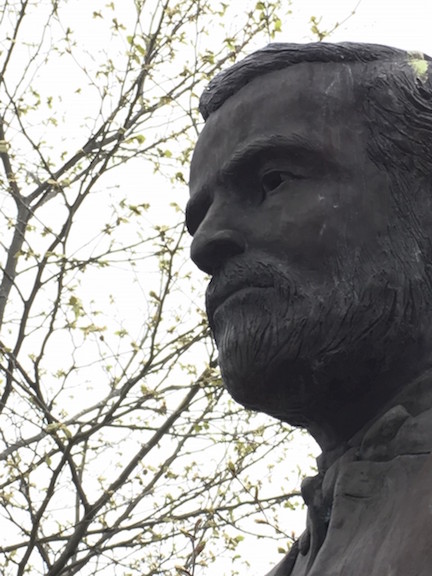Grant in Georgetown (part 2 of 2)
part 2 of 2
In his right hand, Ulysses S. Grant holds one of the cigars that will eventually kill him. His left hand is tucked in the pocket of his oversized jacket. In fact, his entire suit looks a little too big for him. The cuffs of his pants drape down over the top of his boots and, in the back, brush all the way to the ground. It’s one of the things I like most about this statue: its slightly frumpy look. It captures Grant as a regular guy. He seems diminutive, which reflects his life size. 5’8”.
The overall effect looks as though an impressionist painter did the sculpture. It doesn’t feel crisp and marshal like the corresponding statue downtown. Made of bronze atop of brick pedestal, it feels earthy and strangely grounded. It feels relatable.
I have to look closely to be able to tell that he’s wearing his uniform. Only the shoulder bars let me know for sure. Grant was famous for his unadornments.
He’s looking into the middle distance as though watching something, waiting for some event I can’t see, to finish playing out. When it does, he’ll take a puff of the cigar, exhale smoke, turn to his staff to make a comment or issue an order. I love that the statue captures his potential energy.
The statue—commissioned from a bequest by John and Dorothy Kuek, sculpted by Gary Ross, and dedicated in August 2004—stands in front of the Ohio veterans home, located near the county office buildings and highway department on the outskirts of Georgetown. Fenced-in lounge areas, so elderly residents don’t wander away, give the home a prison feel. Is Grant standing outside as though he’s on watch for any escapees? Is he there in solidarity with other old soldiers? Does he stand as a reminder, and example, of all soldier can be? Is he may be holding vigil?



Well, Chris, he was imprisonned on Mt. McGregor from 1976 until 2014 when the Mt. McGregor Correctional Facility occupied the mountain. The link below will take readers to an essay about a visit to Grant Cottage when the prison was open. Well worth reading.
https://mail.yahoo.com/d/search/keyword=The%2520imprisonment%2520of%2520u.s.%2520grant&folders=2/messages/ABl3w0MAADO2VjTYjQqmkGYxNWQ?.src=fp